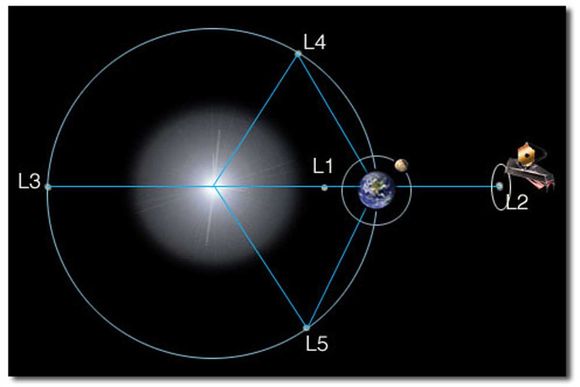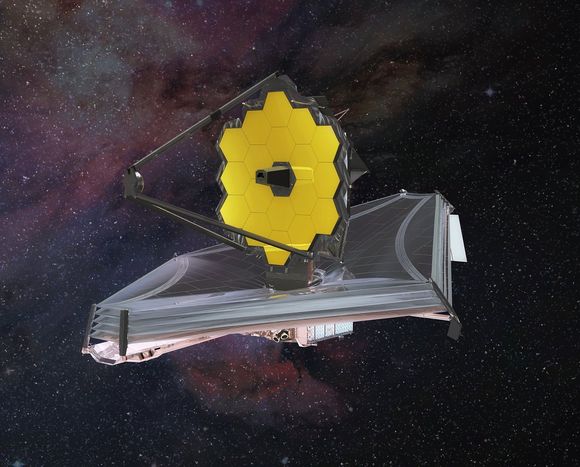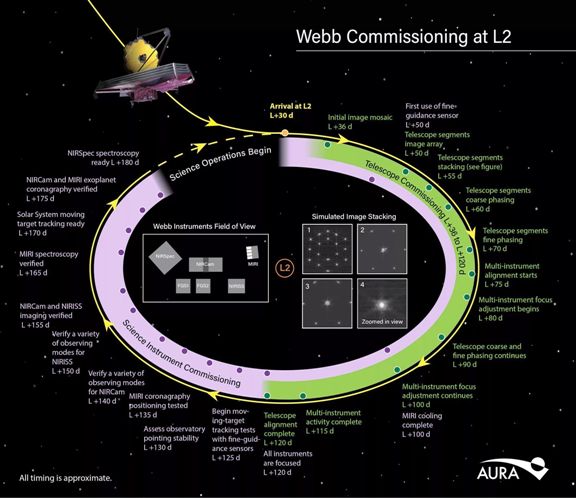The James Webb Space Telescope (JWST) - successor to the Hubble Space Telescope is (as far as we know) in good shape, having successfully just been inserted into the L2 halo orbit. For this to happen, JWST was deliberately given just enough momentum speed so that a short 5 minute positive burn from small thrusters would deliver it safely into the Halo orbit at L2. It's more economical on fuel and easier to accomplish to inject momentum, than using thrusters to slow down.

The Lagrange L2 halo point 1.5 million km from Earth and location of JWST
In what appeared to outside world as a seemingly hitch-free, smoothly run deployment phase, the last 30 days has seen JWST successfully deploy solar panels, critical heat shields, secondary mirror and finally, primary mirror segments, in what must have been unbearably tense times for scientists and engineers involved in the project, let alone everyone else with an interest. The last pieces of the deployment puzzle to fall into place were the primary mirror wing segments. Once unfolded and locked into place, overall rough alignment by motor actuators on the 18 cell segmented gold coated beryllium mirror cells commenced. These 18 radiuses of curvature (ROC) actuators individually shape the curvature of each mirror segment to set the initial parabolic shape of the primary mirror to sub-millimetre parameters. Now that JWST is safely settled into its halo orbit, the final step will be the mirror wave front process, manipulating mirrors in the micron and nanometre ranges to reach the final optical optimum positions for complete overall aligned mirror surface curvature.
Commissioning at L2. - Courtesy Association of Universities For Research In Astronomy.
(click for larger image)
This is quite a long process and will take approximately three months for correct and full alignment. The first target star JWST is going to focus is in the constellation of Ursa Major, to the right of the 'bowl stars' in the 'Plough' or 'Big Dipper' asterism. The star, HD 84406 is a Sun like star 260 light years away is just beyond naked eye visibility at mag +6.9. It is an ideal target for JWST to focus, thereby allowing engineers to micro - align the primary mirror, although once done so the star itself will be too bright to study.
It won't be until late May or June before the first images to the wider world will be released. Only then will the exciting mission work begin, and it will be groundbreaking, sometimes breathtaking and as NASA have already indicated, carried out over a likely extended 10-year science lifetime mission thanks to the precise initial trajectory. If JWST stays healthy, we are going to learn a great deal,- perhaps in a profound way.
Visit https://www.jwst.nasa.gov for all latest information on the observatory.
Images- courtesy of NASA, ESA
- Log in to post comments



